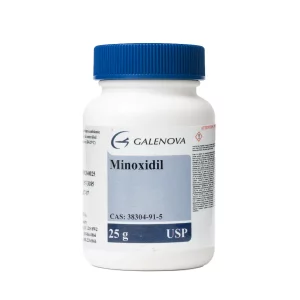Your cart is empty.
Your cart is empty.
New treatments often emerge in the rapidly evolving health and wellness landscape, capturing public interest. One such medication making waves is Mounjaro. If you’re health-conscious, you’ve likely heard whispers about Mounjaro and its potential benefits, leading to common questions like how it stacks up in a Mounjaro vs. Wegovy comparison. But what is Mounjaro, exactly, and why is it generating so much buzz? Discussions on everything from its primary uses to specific considerations like Mounjaro and fertility are prompting talks on everything from its primary uses to specific considerations like Mounjaro and fertility.
Initially gaining attention for its significant impact on blood sugar control, Mounjaro received FDA approval for managing type 2 diabetes. However, its impressive results in clinical trials regarding weight reduction have led to substantial off-label use for weight loss. This article provides an easy-to-understand overview of Mounjaro, exploring its uses, mechanism, benefits, and helping you understand if it might align with your health goals.

So, what is Mounjaro used for primarily? Its official, FDA-approved indication is as an adjunct to diet and exercise to improve glycemic control in adults with type 2 diabetes. It helps regulate blood sugar levels effectively. Beyond this primary use, Mounjaro has gained significant traction as a tool for weight management.
Many doctors prescribe this medication off-label to support substantial weight loss efforts, particularly for individuals struggling with obesity or related metabolic conditions. The way Mounjaro influences appetite and metabolism means it can also be recommended to help improve insulin sensitivity and regulate hunger cues, contributing to overall metabolic health improvements.
Understanding what is in Mounjaro helps clarify how it works. The active ingredient in the Mounjaro injection is a compound called Tirzepatide. It isn’t a naturally occurring hormone but a synthetic peptide designed in a lab. Its structure is engineered to mimic the actions of two crucial gut hormones: glucagon-like peptide-1 (GLP-1) and glucose-dependent insulinotropic polypeptide (GIP).
In our bodies, these natural hormones are released after eating and play vital roles in signalling fullness, prompting insulin release from the pancreas, and regulating how quickly food moves through the digestive system. Mounjaro leverages these pathways.
The unique aspect of how Mounjaro works lies in its dual-action mechanism. Unlike earlier medications such as Ozempic, which primarily target the GLP-1 receptor, Mounjaro (tirzepatide) activates both the GLP-1 and GIP receptors. This dual agonism leads to a synergistic effect, enhancing its impact on metabolic processes. By activating these receptors, Mounjaro helps to:
This combined approach targeting two key incretin hormone pathways differentiates Mounjaro and is thought to contribute to its robust effects on blood sugar control and weight.
While Mounjaro’s primary indications relate to diabetes and weight management, the broader wellness community often extends its interest to potential effects on longevity, energy levels, and achieving a stable weight. Improved blood sugar control, a core function of Mounjaro, is fundamental to long-term health, reducing the risk of complications associated with metabolic dysfunction.
By helping to regulate appetite and reduce patterns of overeating or ‘food noise’, Mounjaro may support more consistent energy levels throughout the day, avoiding the sharp peaks and troughs associated with blood sugar fluctuations. This contributes to an overall sense of well-being and control over eating habits, which many find appealing for long-term health maintenance and potentially supporting longevity goals through better metabolic function and a healthier body weight. Using Mounjaro can be part of a larger strategy for metabolic optimization.

Deciding whether Mounjaro is suitable requires careful consideration and a discussion with a healthcare professional. Potential candidates who might benefit include:
Evaluating your specific health profile, treatment goals, potential side effects, and cost is crucial before you start using Mounjaro. Mounjaro is a prescription medication that requires medical supervision. A doctor can help you weigh the pros and cons based on your circumstances.
When considering metabolic health treatments, comparisons inevitably arise. Mounjaro is often compared to GLP-1 receptor agonists like Ozempic and Wegovy (both contain semaglutide). While all these medications share similarities, such as being injectable and impacting appetite and blood sugar through the GLP-1 pathway, the key difference lies in Mounjaro’s dual action.
By activating the GIP pathway, Mounjaro offers a distinct mechanism that clinical trials suggest may lead to greater reductions in blood sugar (HbA1c) and more significant weight loss for some individuals compared to GLP-1 agonists alone. Mounjaro is also a newer medication on the market than Ozempic, and research continues to explore its full range of effects and long-term profile.

Mounjaro is an injectable prescription medication that acts on two hormone receptors (GLP-1 and GIP) to help manage blood sugar levels and support weight loss.
It is FDA-approved to improve blood sugar control in adults with type 2 diabetes, alongside diet and exercise. It is also commonly prescribed off-label to aid significant weight loss.
The active pharmaceutical ingredient in Mounjaro is tirzepatide, a synthetic peptide designed to mimic the actions of the natural gut hormones GLP-1 and GIP.
Mounjaro works by activating GLP-1 and GIP receptors, which help lower blood sugar after eating, slow down digestion, making you feel fuller longer, reduce appetite signals, and improve the body’s response to insulin.
While Mounjaro is specifically approved for type 2 diabetes, some doctors prescribe it off-label for individuals without diabetes to manage obesity or significant weight challenges. This use should only occur under the guidance and supervision of a qualified healthcare provider.


Minoxidil 25mg - Oral vasodilator for blood pressure management. Cardiovascular foundation support, pharmaceutical-grade standards, expert monitoring required.

Acarbose 50mg 120 Tablets - Gentle introduction to glucose control. Three-times daily with meals, precision-formulated tablet strength.

Dasatinib 20mg 60 Tablets - Flexible pediatric-strength dosing option. USP standards compliance, anytime administration, gradual increase capability.
Unlock savings on bundles and elevate your online experience today!